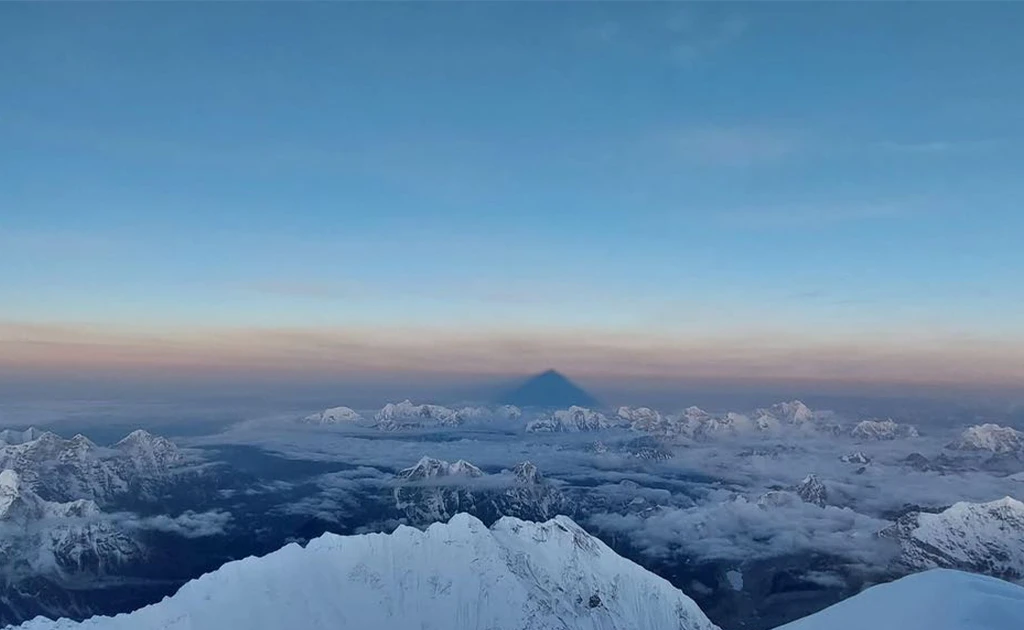Lobuche Peak Climbing is the finest peak climbing in the Everest Region after Island Peak. It is the perfect combination of the Everest Base Camp Trek and Peak climbing. Lobuche peak climbing leads you to the summit of Lobuche East, which offers outstanding views of the Panoramic peaks. Lobuche Peak has two edges, Lobuche West (6114m) and Lobuche East (6119m). This package is all about Lobuche East, which is less technical and easier than Lobuche West.
The climb to Lobuche Peak is easier to summit than other peaks. Our 18-day Lobuche Peak Climbing Itinerary is perfect for beginners. Climbing Lobuche Peak can be a learning experience for beginner trekkers and climbers. For beginners, high-altitude trekking and climbing may be difficult, but it's doable. However, experience in using ropes, harnesses, jumars, and other gear would be helpful for beginners. Likewise, Climbing Lobuche Peak is also a great practice for mountaineers before climbing higher mountains like Everest, Ama Dablam, Lhotse, etc. To reach Lobuche Base Camp, the trail begins through the regular Everest Base Camp route. It is an excellent opportunity to walk along popular trekking routes and climb a peak at the same time. Moreover, it gives enough time to acclimatise, reducing the risk of acute mountain sickness. Starting with an exciting flight to Lukla, the trail passes different wildlife, vegetation, rivers, and landscapes. From Lukla, the trek begins and moves ahead to Phakding, Namche, Tengboche, Dingboche, and Lobuche. After Lobuche, you will hike to Everest Base Camp and Kala Patthar. Cherishing every moment at EBC, trailhead towards the Lobuche Base Camp, and finally to the summit.
Why Lobuche East Peak?
For adventurers who dream of peak climbing beyond the ordinary, Lobuche East is the ultimate choice. This expedition lets you explore the Khumbu Valley from a completely new perspective, trekking through traditional Sherpa villages, ancient monasteries, and dramatic alpine landscapes. Standing atop Lobuche East, you’ll be rewarded with breathtaking, panoramic views of Everest, Ama Dablam, Lhotse, and Nuptse, an experience that goes far beyond a regular trek and stays with you for a lifetime.
Difficulty Level
Lobuche East is classified as a moderately technical trekking peak. While it doesn’t require expert climbing skills, it does involve: Glacier walking, Steep ice/snow sections, use of crampons, ropes, and an ice axe. Due to its altitude (6,119 m) and terrain, physical fitness, high-altitude trekking experience, and some basic mountaineering knowledge are essential. Lobuche Peak Climbing is not extreme in comparison to other peaks in the Everest region. It takes 6-7 hours of trekking in a day and 9-10 hours of climbing to complete this journey. The trail from Lobuche Village to the base camp is steep and rocky. Climbers must have a lot of strength and stamina to walk through difficult terrain. Moreover, the trail contains snow-covered stones, steep stone slabs, and snow walls requiring skills and knowledge. Therefore, climbers must know how to use ropes, crampons, and cables while climbing the peak.
In addition, climbing at higher elevations can cause acute mountain sickness. Trekking to Everest Base Camp in our itinerary allows you to acclimatise for the climbing. It gives you enough time, even experienced climbers can feel the sickness due to high altitude. Therefore, even a beginner or experienced climber needs proper planning, gear, and guidance. However, for extreme beginners, using the gear and equipment for the first time can be difficult. The climbing guide from Iconic Holiday Nepal assists by giving you the skills you need for the climb.
